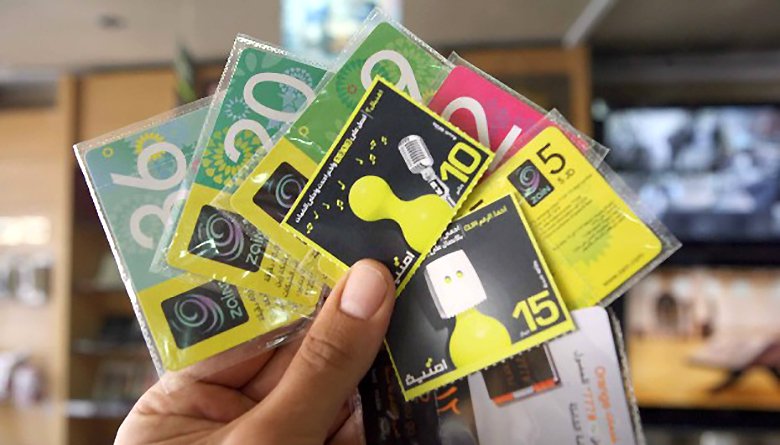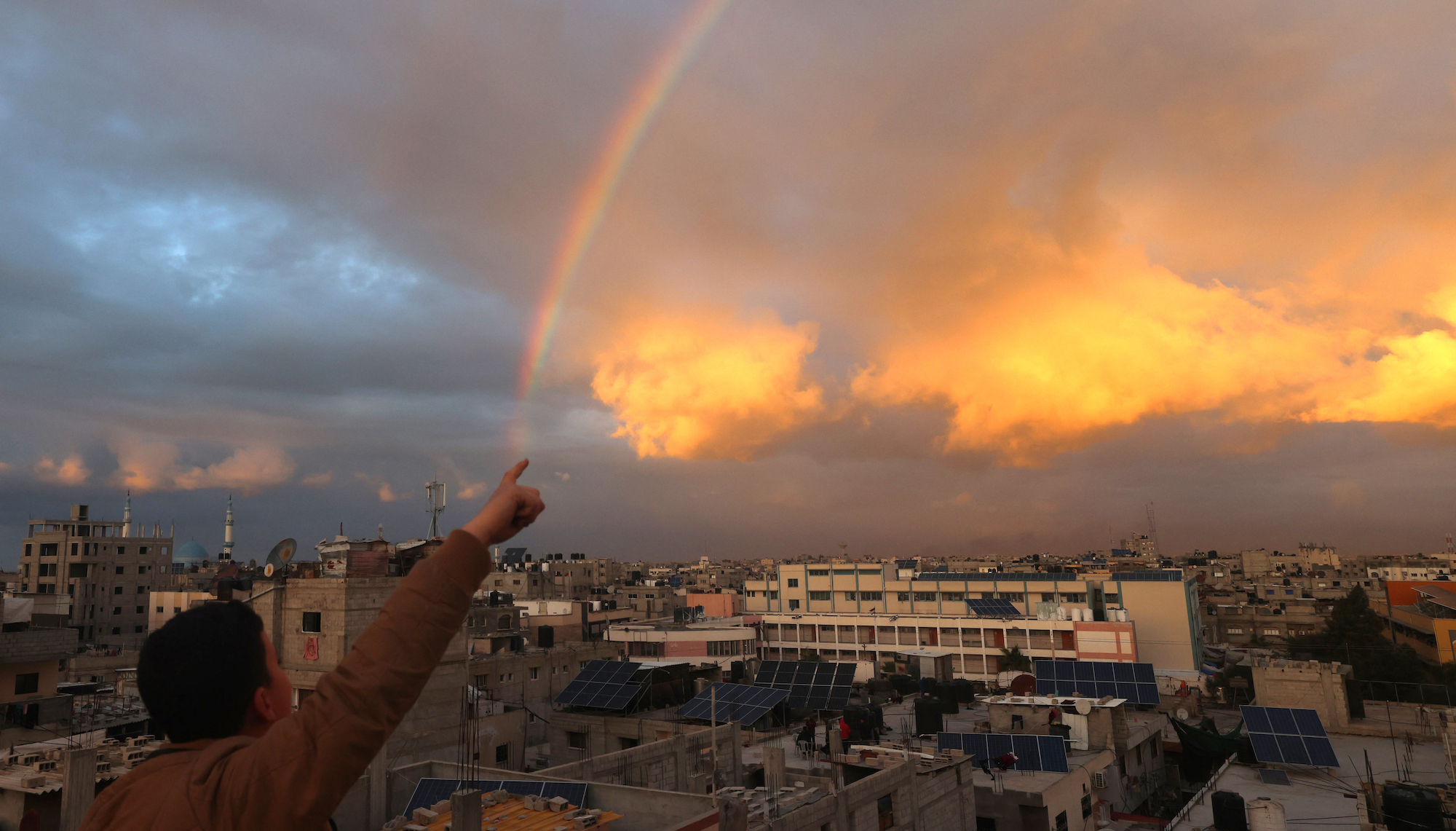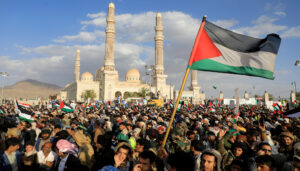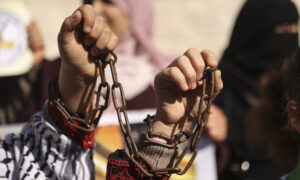On a crowded main street in Amman, a prepaid recharge card in the nine-dinar category is sold for 12.5 dinars in a convenience store. In a cell phone shop just meters away, it is sold for 13 dinars.
But in a telecom company branch two kilometers away, the same card is sold for 11.79 dinars. This is according to a sign of official prices hung by telecom company branches within view of their customers.
Last November, the Consumer Protection Association issued a statement calling upon regulatory groups and telecom companies to issue “a sufficient and comprehensive breakdown from the government and these companies, explaining the prices of recharge cell phone cards.” This was in response to the increase in card prices, which has fluctuated between 10 and 20 qirsh.
According to Mohammed ‘Obeidat, president of the association, the statement was issued following the escalation of complaints addressing the surge in prices of prepaid recharge cards in previous years.
The latest of these occurred in May of 2018, when telecom companies’ social media accounts were filled with angry messages from users demanding an explanation for the sudden rise in recharge card prices.
Telecom companies stated at the time that a decision to increase prices of recharge cards had not been issued. However, card distributors attributed the rise to locations of sale, which place any desired profit margin on top of the price of the cards.
Although the Consumer Protection Association’s statement placed the blame on telecom companies and weak regulation, Mohammed ‘Abidat clarified to 7iber that “it is clear that some distributors manipulate the prices of recharge cards.”
Distributors that 7iber communicated with stated that “we cannot exceed the prices specified to us by telecommunications companies.”
The question of regulating prices remains open among these groups. How, then, are recharge cards, a commodity Jordanian citizens cannot dispense with, priced — beginning from their initial source to locations of sale? Which party is responsible for regulating these prices?
How is the official recharge card price calculated?
The disparity between the final price, which is requested by the seller at the location of sale, and the balance printed on the recharge card, no longer surprises anyone.
That is, the buyer of the card realizes that the disparity is due to the addition of a sales tax and the profit margin added by distributors and locations of sale. But the process of calculating the difference may be known to many.
Taxes imposed on phone calls differ from those imposed on data (data packages). Although both are subject to a sales tax of 16% of the original card price, the government imposes a special rider tax of 26% on phone call service before applying the sales tax.
This tax was added, in 2003, during the Ali Abu Al-Ragheb administration’s system of private-sector taxes under the article “delayed or prepaid payment for cell phone and mobile radio subscription service.”
The tax, originally 4%, climbed twice during the Samir Rifai administration in 2010, to arrive at first to 8% in June, and then to arrive at 12% in August of 2010.
It then doubled in 2013, during the Abdullah Ensour administration, to 24%, arriving finally at 26% in February 2017 during the Mulki administration. It has remained at that percentage until now.
Thus, for example, the price of calls-only recharge cards of the one-dinar category has reached 1.46 dinars in company branches. First, the special rider tax of 26% is imposed on the original card’s balance to become 1.26 dinars, and then the sales tax of 16% is imposed on 1.26 dinars to become 1.46 dinars.
In the case of the data recharge cards, this is a less complicated procedure. A 16% tax is imposed on the balance of the card. Thus, the price of a data card of the one-dinar category becomes 1.16 dinars.
This tax was 8% before the Mulki administration raised it to 16% in February 2017.
Some of the most popular cards among users are monthly recharge cards, which distribute the card’s balance equally between calls and data, and which were introduced by the three telecommunications companies (Orange, Umniah, Zain), in 2016.
Orange calls them “Half N Half,” Zain calls them “Mix,” and Umniah calls them “Smart.” Let’s say one of these companies introduces the two-dinar category of this type of card. A dinar of calls will be charged at a final price of 1.46 dinars (according to the above-mentioned calculation), but a dinar of data will be charged at 1.16 dinars, making the price for both 2.62 dinars, after adding the figures together.
According to that formula, the official prices of the five, seven, and nine-dinar categories become 6.55, 9.17, and 11.79, respectively.
These prices can be found posted on the walls of Zain, Orange, and Umniah branches in accordance with Article 11 of the Industry and Commerce Law, which requires that “every vendor put in clear and visible illustration the price of every commodity offered for sale, whether the price is specified in accordance with the statues of this law or otherwise specified. The vendor is obligated to commit to these prices as the upper limit.”
The prices of these cards vary outside Zain, Orange, and Umniah branches. This is due to the addition of a profit margin by company agents and distributors, who deliver them to locations of sale such as cell phone stores and convenience stores.
After the tax
A recharge card moves from telecom companies to locations of sale via multiple steps. This process begins with telecom company agents, continues on to retail distributors, and ends with locations of sale.
Ali Al-Talafha, Director of Market Regulation and Supply Administration in the Ministry of Industry and Commerce, asserts that the prices of prepaid recharge cards are determined based on the principle of supply and demand within the geographic region. This means that card prices “[are] not limited by price ceilings, according to existing legislation.”
However, according to what a group of company agents transmitted to us, telecom companies determine the maximum profit margins on the cards. This means, according to one of the agencies’ director of sales, that, “for example, it is not possible for distribution agents to sell a seven-dinar category card, which they bought for the telecom companies’ wholesale price of 9.17 dinars, for more than 9.55 dinars.”
The owner of a cell phone shop confirmed this, saying, “they arrive from the distributors costing 9.55 dinars and I add half a dinar as a profit margin… so it becomes 10 dinars.”
The majority of distributors we spoke to did not deny the rise in card prices in May 2018, but most of them refused to explain the price hike.
“It is up to you to contact those telecom companies because I cannot clarify in lieu of them,” says one of the distributors.
In turn, Orange did not respond to 7iber’s questions. Umniah, however, replied briefly to a group of questions that were sent to them by stating that “the rise in cell phone recharge card prices did not occur. At Umniah, cards are sold according to the official and legally permitted prices.”
For his part, Ali Al-Talafha affirms that the rise in card prices in May did not exceed 7%, and that determining card prices follows the laws of the open market.
In his statement, the president of the Consumer Protection Association, Mohammed ‘Abidat, hinted towards “undertaking practical steps against telecom companies and vendors if regulators do not adopt real measures.”
Yet, he stressed to 7iber, upon being asked about those steps, that “our only roles are to receive complaints and transmit them to the relevant parties, and to raise consumer awareness.”
The agency that administers the communications sector does not believe that its role is to regulate the prices of recharge cards “because that falls under the regulatory jurisdiction of another party,” which it did not name. According to the agency, the reason it does not have a regulatory role is that recharge cards do not fall under communication services, and are instead a “form of payment between the subscribers and the companies. Furthermore, the prices of these cards do not fall under the authority of the specified agency by reason of statutes 7/A/12 and 8/A/12 of the communications law.”
Thus, these commodities are connected to market conditions, and locations of sale can choose the price they find appropriate according to the level of competition.
“[Competition] varies, depending on the geographical area, the availability of locations of sale to the company, and the consumer’s ability to purchase online.”
On the Market Regulation and Supply Administration’s website, the Ministry of Industry and Commerce supplies a toll-free number for complaints, as well as the possibility to complain via email and ministry social media accounts.
According to Al-Talafha, the ministry was not able to account for the number of complaints linked to prepaid recharge cards in 2017, but that figure reached 28 complaints in 2018.
The ministry did not disclose the complained-about party, but Al-Talafha surmises that the complaints refer to parties that the consumer deals with directly: company branches and other locations of sale.
On the other side of the complaints hotline, an employee of the Ministry of Industry and Commerce responds to a question about the maximum permitted limit for profit margins by saying that the ministry has “a list of line prices, which are specified by telecom companies to locations of sale.”
For example, employees of the regulatory administration would investigate the markets for a cell phone store mentioned in a complaint about the increase in card prices — such as when 7 dinar card is sold at a price higher than 10 dinars.
After a discussion of the problems he has with recharge cards, a convenience store owner wonders: “Why don’t they print the final price on the recharge cards like this?”, indicating the international calling card “Ma’an,” which has “2 dinars” printed on it.
The printed number on prepaid recharge cards indicates “a unit, not [a price], so it is not possible for the ministry, according to existing legislation, to fine someone who sells the product for a price higher than that,” says Al-Talafha.
The ministry intervenes to designate a commodity price ceiling if it is included under “basic commodities,” like flour or potatoes. But if telecom companies or locations of sale want to raise recharge card prices in the future, according to Al-Talafha, they are able to as long as they announce their new prices to customers in their branches.







